Opinions on the Orchard of the Lower Segura River: A Changing Space under Great Human Pressure
Abstract
1. Introduction
2. Study Area
3. Methodology
3.1. Theoretical Background
3.2. Materials and Methods
- The first one tries to discover the socioeconomic profile of those interviewed, variables such as age, sex, and profession can determine the responses issued.
- With the second group of questions we try to find out the degree of relationship that they have with the Orchard, as well as whether they are aware of the current situation in which this agrarian space is found. We urge you to answer the following questions: Do you reside in the Orchard or urban nucleus? How much time do you dedicate to agricultural work? What does the Orchard mean to you? What are the factors that have caused the important loss of this agrarian landscape?
- Thirdly, we are interested in knowing the reasoned opinion of these residents on the need to recover the space of which they are part, so the questions raised are the following: Do you consider it necessary to protect this agrarian landscape? Do you think that abandoned agrarian spaces should be revitalised ecologically and economically? What are the factors that have caused the significant loss of this agrarian landscape?
4. Results and Discussion
4.1. Socio-Demographic Characteristics of the Interviewees
4.2. The Significance of the Orchard for the Interviewed Population
4.3. Factors Causing the Loss of Orchard Space
- Speculation. The accelerated economic change experienced in recent decades has triggered, in a traditionally agricultural region, a new production model that has evolved towards the search for immediate profits, generating a radical change in land use. The interviewees indicate speculation as the main factor causing the loss of the Orchard, and they refer emphatically to the real estate sector as an activity that reduces the irrigated area (Figure 9). Some examples of responses are as follows: “The Orchard gives way to urban speculation, which increases the value of the land and generates rapid and excessive enrichment for construction companies”, “Many of the agricultural workers traded their jobs for construction during the housing boom”. Housing construction has been the economic model that has focused regional development in recent decades [44].
- Change of mentality. The predominance of urban population and ways of life associated with the city is another cause stated by interviewees. The city is associated with well-being, the opposite of all the “discomforts of living in rural areas.” This perception is especially prevalent in the young population surveyed, a circumstance that motivates the elderly to exclaim the lack of generational replacement in the work of the orchard (Example response: “Today we can find everything in the city, but if we live in the orchard, we are socially isolated and we need to take our car to access the stores, banks, health centres...”).
- Low profitability. In almost all the responses, the incidence of the economic factor is strongly apparent. Some of the most expressive answers are as follows: “The agricultural lands are abandoned due to the low profitability and the high competitiveness of the produce that comes from abroad”; “The small and medium farmer cannot subsist with the current market prices”; “Imported produce has a lower cost than what we grow here, and we do not get adequate profitability”; “Today you cannot live off agricultural activity, it is no longer profitable, you have to abandon this activity”. In the interviews there is a feeling of discouragement and great sadness. The traditional individualism of the farmer and the mistrust towards other marketing systems, where associations acquire a prominent role, are barely consolidated in the Orchard of the Lower Segura River.
- Attractiveness in other production sectors. Three valuations in which these changes are observed are described below, and are reflected consistently with the age of each person surveyed: (a) A 79-year-old pensioner points out the following: “There is a lack of interest from the new generations in agricultural jobs, with unpredictable hours, young people are in favour of the advantage of an eight-hour work day and having free time”; (b) A 50-year-old person said: “There is a loss of attractiveness for young people and adults who inherit the farms, and due to the lack of amenities offered by the rural environment they choose the urban space, where they get adequate wages for the effort made, and with older labour and cultural possibilities”; (c) A 26-year-old young woman conveyed the popular belief that “people who work in the agrarian sector are clumsy, uncivilized, and poorly educated.”
- Inadequate policies. Direct criticism of politicians and the administration itself take on special relevance among those interviewed, whom they hold responsible for “the construction and speculative activities accompanied by permissive legislation”, which has gone against the maintenance of agriculture and the consequent conservation of the Orchard. Local authorities have favoured agricultural land use ratings over developable land, a generator of higher capital gains and taxes. Some interviewees strongly and concisely point out that the main factor in the deterioration of the orchard space is related solely to “the attitude of the rulers” and “the unprofessionalism of politicians”, sometimes allied with “urban speculators who have dedicated their time and effort to actions of high, immediate, and safe profitability”.
- Lack of spatial planning. In the same sense, the surveys have seen that: “the absence of planning (in the medium and long term) and protection by the public powers or legislators” are a cause of the degradation of agriculture.
- Disappearance of family farming. The economic change that has occurred since the second half of the 20th century, with advances in new forms of communication and commercialisation, was a shock both to the mentality of people linked to agricultural land and for the deeply rooted social behaviours that had been practiced and transmitted from generation to generation. Smallholder agriculture, together with an elderly or retired active population linked to agricultural work, with the aforementioned problems, has caused the disappearance of small family farms. Respondents also attribute this situation to the appearance of large fruit and vegetable companies, which, in the opinion of many interviewees: “devour small farmers”, who, in the absence of capitalisation and renewal of production systems, are forced to “lease the farmland for large agribusinesses”.
- Lack of water resources. The scarcity of water resources and the poor quality of the flows used in irrigation are also a point of contention when discussing the situation that this agricultural area is going through. Indeed, to the structural water deficit characteristic of the Segura river, we must add the location of the sector that is analysed in the final section (near its mouth), where the reduced volumes that arrive cause the so-called “water wars”, due to the confrontation that there is among irrigation farmers. We also warn that farmers are unhappy with the level of contamination of the river waters in this last stretch or irrigated section: “the orchards cannot withstand water of such poor quality!”
4.4. Considerations Regarding the Protection of the Orchard
5. Conclusions
- Rediscovery. The high degree of awareness of the respondents in relation to the intrinsic values of the rural environment in which they live is striking. The sensitivity towards the protection and conservation of the surrounding rural space stands out greatly, giving special meaning to the landscape, as it constitutes a cultural benchmark characterised by its uniqueness.
- Attractive. The Orchard implies a suggestive heritage area for its population, derived from the symbiosis of the varied cultural wealth in relation to the natural wealth that surrounds it.
- Farming. The agricultural value underlies the thoughts of the residents when it comes to evoking the term Orchard, a word closely linked to quality products harvested in the vicinity, which means travelling a short distance to reach local markets in optimal conditions of freshness and avoiding the increase in prices, by reducing the costs derived from transport.
- Multiactivity. The results obtained from the interviews demonstrate the importance that polyfunctionality can be achieved in this agricultural space, understood in a rational and balanced way. The implantation of other activities derived from leisure society, be they recreation for the surrounding populations, or tourism for a foreign clientele, contribute to energising the socioeconomic productive fabric. In this sense, agrotourism could be the guarantor of the maintenance of the landscape and the built heritage.
- We recommend improving the existing production and commercial system to achieve greater agricultural development. In an agrarian space such as the one analysed, which has in its favour a solid image in the collective sentiment, linked to the agricultural landscape, farmers should join forces (together with the intervention of local political authorities) to incorporate into their production figures (brands) that conferred recognised quality, such as: Protected Designations of Origin, Protected Geographical Indicators, or Guaranteed Traditional Specialty certifications. With these measures it would be possible to increase competitiveness and position production favourably in the national and international market.
- We consider it necessary to obtain, for this irrigated orchard territory, the legal construct of “Agrarian Park”, and although this legal form is not included in the regulations of the Valencian Community, we know that it has given positive results in other Spanish and European areas. The implementation of this legal protection figure would mean considering this area of historical irrigation as a common good, and preserving it from urban progress.
- Lastly, it would be necessary, as stated in the Baeza Charter on Agrarian Heritage [45], to achieve the dignity of agrarian activity to avoid losing an important part of the knowledge and culture that society has developed in rural spaces. For this, it is necessary to understand agrarian heritage holistically, as a broad set of natural and cultural assets, integrating all possible manifestations: technological, documentary, ritual, and linguistic, among others.
Author Contributions
Funding
Acknowledgments
Conflicts of Interest
References
- Allport, F.H. El problema de la Percepción; Nueva Visión: Buenos Aires, Argentina, 1974. [Google Scholar]
- Ardila, A. Psicología de la Percepción; Ed. Trillas S.A: Mexico City, Mexico, 1983. [Google Scholar]
- Day, R.H. Psicología de la Percepción Humana; Ed. Limusa-Wiley: Mexico City, Mexico, 1973. [Google Scholar]
- Rock, I. La Percepción; Labor, Colección Prensa Científica, 1: Barcelona, Spain, 1985. [Google Scholar]
- Vargas Melgarejo, L.M. Sobre el concepto de percepción. Alteridades 1994, 4, 47–53. [Google Scholar]
- De Souza Minayo, M.C. Los conceptos estructurantes de la investigación cualitativa. Salud Colect. 2010, 6, 251–261. [Google Scholar] [CrossRef]
- Symeonakis, E.; Calvo-Cases, A.; Arnau-Rosalen, E. Land use change and land degradation in southeastern Mediterranean Spain. Environ. Manag. 2007, 40, 80–94. [Google Scholar] [CrossRef] [PubMed]
- Badia, A.; Estany, G.; Otero, I.; Juncá, M. Estudio del crecimiento urbano disperso en el paisaje en Matadepera. (Región metropolitana de Barcelona). Boletín de la Asociación Geógrafos Españoles 2010, 54, 301–321. [Google Scholar]
- Zasada, I.; Alves, S.; Müller, F.C.; Piorr, A.; Berges, R.; Bell, S. International retirement migration in the Alicante region. Spain: Process. spatial pattern and environmental impacts. J. Environ. Plan. Manag. 2010, 53, 125–141. [Google Scholar] [CrossRef]
- Serra, P.; Vera, A.; Tulla, A.F.; Salvati, L. Beyond urban–rural dichotomy: Exploring socioeconomic and land-use processes of change in Spain (1991–2011). Appl. Geogr. 2014, 55, 71–81. [Google Scholar] [CrossRef]
- Salvati, L. Neither Urban Nor Rural: Urban Growth. Economic Functions and the Use of Land in the Mediterranean Fringe. Metrop. Rural. (Res. Rural Sociol. Dev.) 2016, 23, 19–37. [Google Scholar]
- Olmo, R.M.; Muñoz, S.F. Paisajes y patrimonios culturales del agua. La salvaguarda del valor patrimonial de los regadíos tradicionales. Scr. Nova 2010, 14, 337. [Google Scholar]
- Ponce Sánchez, M.D. Competitividad e innovación en el producto turístico rural de la Región de Murcia. Cuadernos de Turismo 2011, 27, 743–758. [Google Scholar]
- García-Mayor, C. Invariantes en la evolución e identidad territorial del paisaje de huerta tradicional de la Vega Baja del río Segura: 1929–2010. Boletín de la Asociación de Geógrafos Españoles 2017, 73, 369–388. [Google Scholar] [CrossRef][Green Version]
- García-Mayor, C.; Canales-Martínez, G. Catral. De la huerta tradicional a la huerta urbanizada. La transformación del paisaje agrario en el Bajo Segura: Del animus regandi al animus aedificandi. Cuadernos de Turismo 2017, 39, 191–213. [Google Scholar] [CrossRef][Green Version]
- García Ferrandis, I. Los espacios periurbanos como recurso didáctico: El caso de la huerta de Valencia. Didáctica de las Ciencias Experimentales y Sociales 2007, 21, 197–210. [Google Scholar]
- Kayser, B. La Cultura, un Incentive Para el Desarrollo Local; Cultura y Desarrollo Rural, Revista LEADER, Magazine; Comisión Europea, Dirección General de Agricultura: Brussels, Belgium, 1994; Volume 8. [Google Scholar]
- Verhelst, T. Las Funciones Sociales de la Cultura; Cultura y Desarrollo Rural, Revista LEADER, Magazine; Comisión Europea, Dirección General de Agricultura: Brussels, Belgium, 1994; Volume 8. [Google Scholar]
- Ortega Gasset, J. Sobre el Concepto de Sensación; Ed. Revista de Occidente, (Séptima Edición 1966): Madrid, Spain, 1913. [Google Scholar]
- Canales-Martínez, G. El Bajo Segura. Estructura Espacial, Demográfica y Económica; CAM, Fundación Cultural, Universidad de Alicante: Alicante, Spain, 1995. [Google Scholar]
- Canales-Martínez, G.; Ponce, M.D. Agua y Sostenibilidad. La Monumentalidad del Edificio Hidráulico de la Huerta del Bajo Segura; Universidad de Alicante y Cátedra Arzobispo Loazes: Alicante, Spain, 2019. [Google Scholar]
- Canales-Martínez, G. La Huerta del Bajo Segura, paradigma de la cultura del agua. In Patrimonio Hidráulico y Cultura del Agua en el Mediterráneo; Gómez Espín, J.M., Hervás Avilés, R.M., Eds.; Fundación Séneca: Murcia, Spain, 2012; pp. 265–287. [Google Scholar]
- Gil, A. La Cultura del Agua en la Cuenca del Segura; Ed. Fundación Cajamurcia: Murcia, Spain, 2005. [Google Scholar]
- Canales Martínez, G.; López Pomares, A. La extensión del regadío en el municipio de Orihuela y su repercusión en el territorio (1910–2010). Papeles de Geografía 2011, 53–54, 49–63. [Google Scholar]
- Trapote, A.; Roca Roca, J.F.; Melgarejo, J. Azudes y acueductos del sistema de riego tradicional de la Vega Baja del Segura (Alicante. España). Investigaciones Geográficas 2015, 63, 143–160. [Google Scholar] [CrossRef]
- Canales-Martínez, G.; Ponce, M.D. Las Huertas de Murcia y Orihuela. La homogeneidad de un paisaje del agua con dos realidades diferentes. Erebea Revista de Humanidades y Ciencias Sociales 2019, 9, 133–160. [Google Scholar] [CrossRef]
- Cases, A.; Marroquí, N. Crisis de una forma de vida tradicional. La Vega Baja del Segura. Geographos Revista Digital Para Estudiantes de Geografía y Ciencias Sociales 2011, 2, 1–27. [Google Scholar]
- Garcia-Mayor, C.; Canales-Martínez, G. Poly-nuclear urban system. Landscape identity and economic development: The Vega Baja of the Segura River (Alicante) case study. In 24th ISUF International Conference. City and Territory in the Globalización; Urios, D., Colomer, J., Portalés, A., Eds.; Universidad Politécnica de Valencia: Valencia, Spain, 2018; pp. 47–53. [Google Scholar]
- Wood, L.J. Perception studies in Geography. Trans. Inst. Br. Geogr. 1970, 50, 12–142. [Google Scholar] [CrossRef]
- Rushton, G. On Behavioral and Perception Geography. Ann. Assoc. Am. Geogr. 1979, 69, 463–464. [Google Scholar] [CrossRef]
- Lowenthal, D. Environmentul Perception and Behavior; University of Chicago: Chicago, IL, USA, 1967. [Google Scholar]
- Capel Saez, H. Percepción del medio y comportamiento geográfico. Revista de Geografía 1973, 7, 58–150. [Google Scholar]
- Bailly, A. Lo imaginario espacial y la Geografía. En defensa de la Geografía de las Representaciones. Anales de Geografía 1989, 9, 11–19. [Google Scholar]
- Ponce Sánchez, M.D. El Modelo Turístico en los Municipios Marmenorenses de San Javier y San Pedro del Pinatar. Una Aportación a la Geografía de la Percepción; Servicio de Publicaciones de la Universidad de Murcia. Libro Digital: Murcia, Spain, 2004. [Google Scholar]
- Gould, P. On Mental Maps. Représenter L’espace; Ed. Anthropos: París, France, 1966. [Google Scholar]
- Gumuchian, H. Les Representations en Geographie. Définitions, Méthodes et Outils, en Représenter L’espace; Ed. Anthropos: París, France, 1989. [Google Scholar]
- Willits, F.K.; Bealer, R.C.; Timbers, V.L. Popular images of “rurality”: Data from a Pennsylvania survey. Rural Sociol. 1990, 55, 559–578. [Google Scholar] [CrossRef]
- Nelson, P.B. Rural restructuring in the American West: Land use, family and class discourses. J. Rural Stud. 2001, 17, 395–407. [Google Scholar] [CrossRef]
- DeLyser, D.; Sui, D. Crossing the qualitative-quantitative chasm III: Enduring methods, open geography, participatory research, and the fourth paradigm. Prog. Hum. Geogr. 2014, 38, 294–307. [Google Scholar] [CrossRef]
- Shucksmith, M. Disintegrated rural development? Neo-endogenous rural development, planning and place-shaping in diffused power contexts. Sociol. Rural. 2010, 50, 1–14. [Google Scholar] [CrossRef]
- Government of Spain. Report on the Coordination Mechanisms and Instruments for the Implementation of the 2030 Agenda in Spain; (02/15/2019); C.o.M., Ed. Government of Spain: Madrid, Spain, 2019. [Google Scholar]
- Committee of the Regions. White Paper of the Committee of the Regions on Multilevel Governance; Official Journal of the European Union, Opinion C 211/1; Committee of the Regions: Bruxelles, Belgium, 2009. [Google Scholar]
- Kayser, B. Les Sciences Sociales Face au Mode Rural. Méthodes et Moyens; Presses Universitaires du Mirail: Toulouse, France, 1989. [Google Scholar]
- García-Marín, R.; Martínez, J.M.S.; Marín, C.E. The property sector in Spain. Evolutionary analysis, current problems and difficulties for its development. Cuadernos Geográficos 2020, 59, 6–31. [Google Scholar]
- Castillo Ruíz, J. Carta de Baeza Sobre Patrimonio Agrario; Universidad Internacional de Andalucía, Impresión Artes Gráficas Servigraf: Sevilla, Spain, 2013. [Google Scholar]

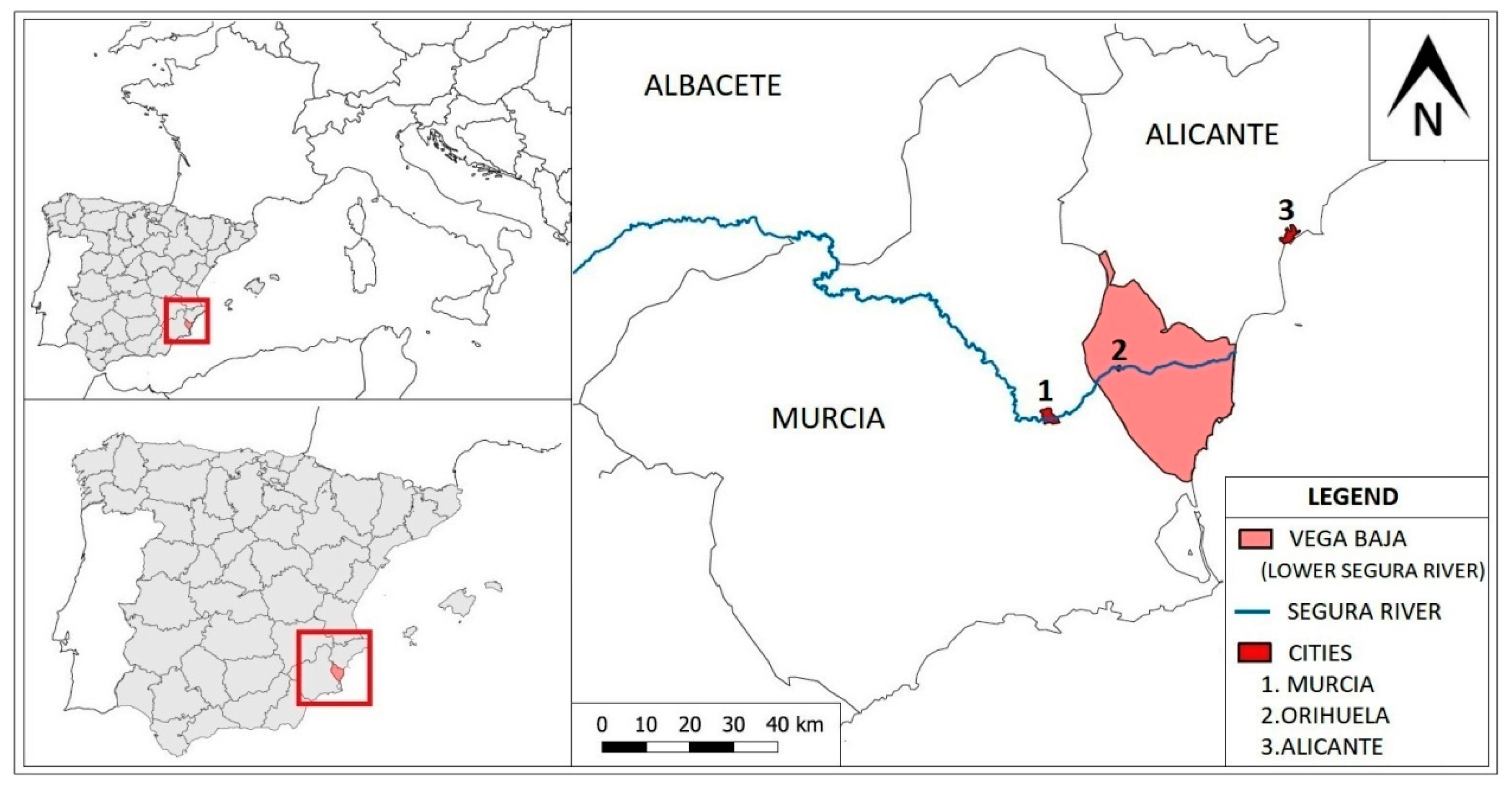
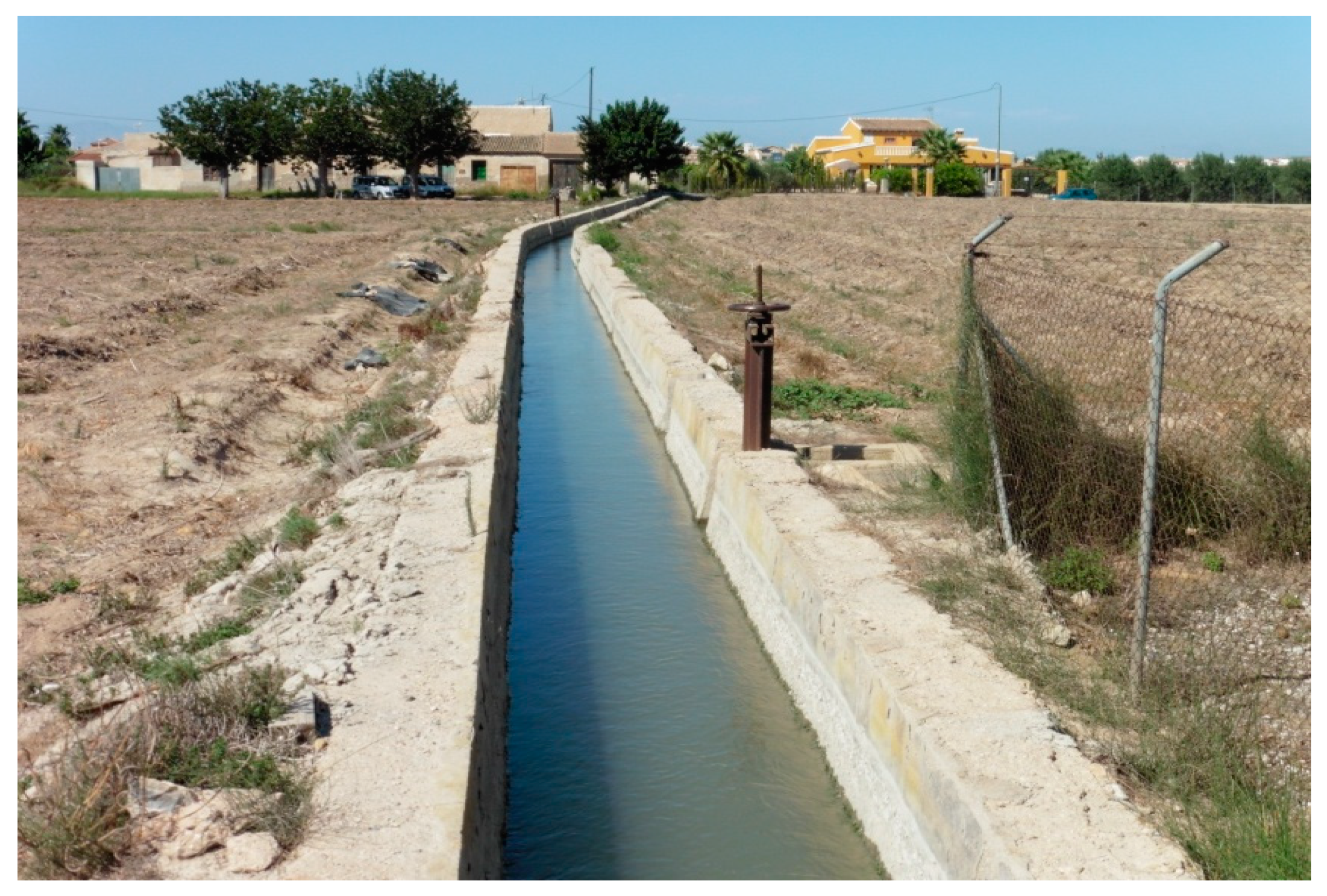

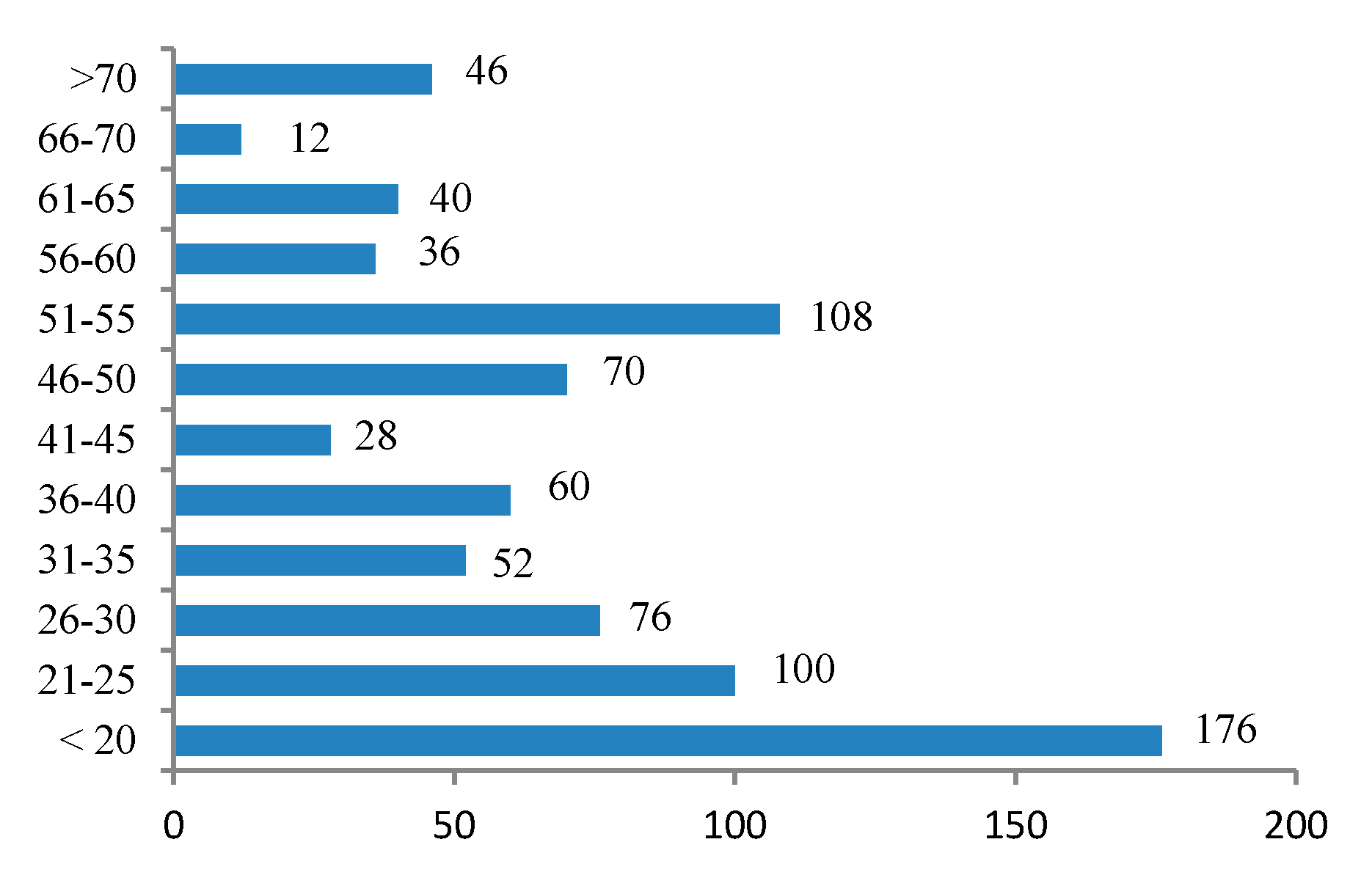
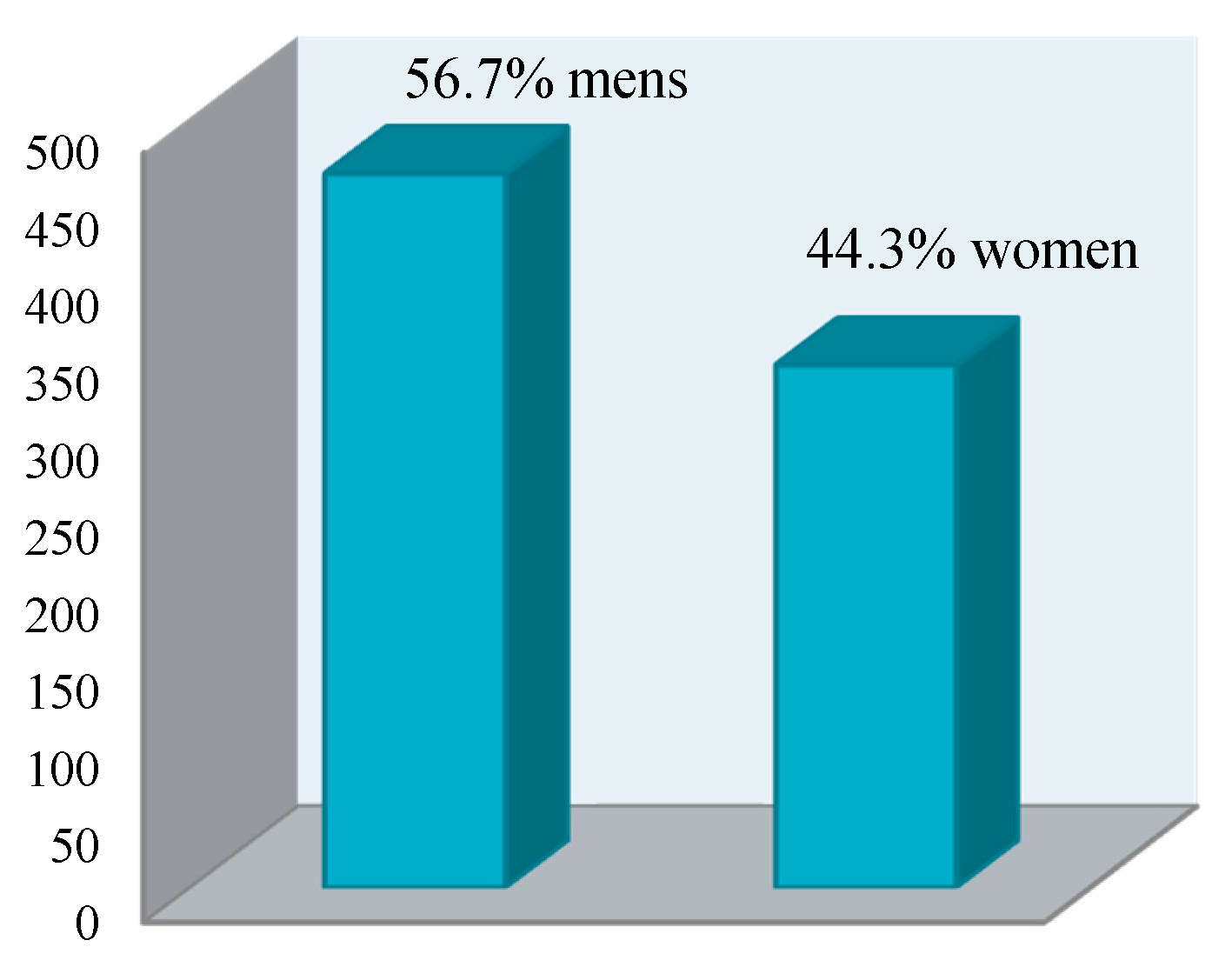
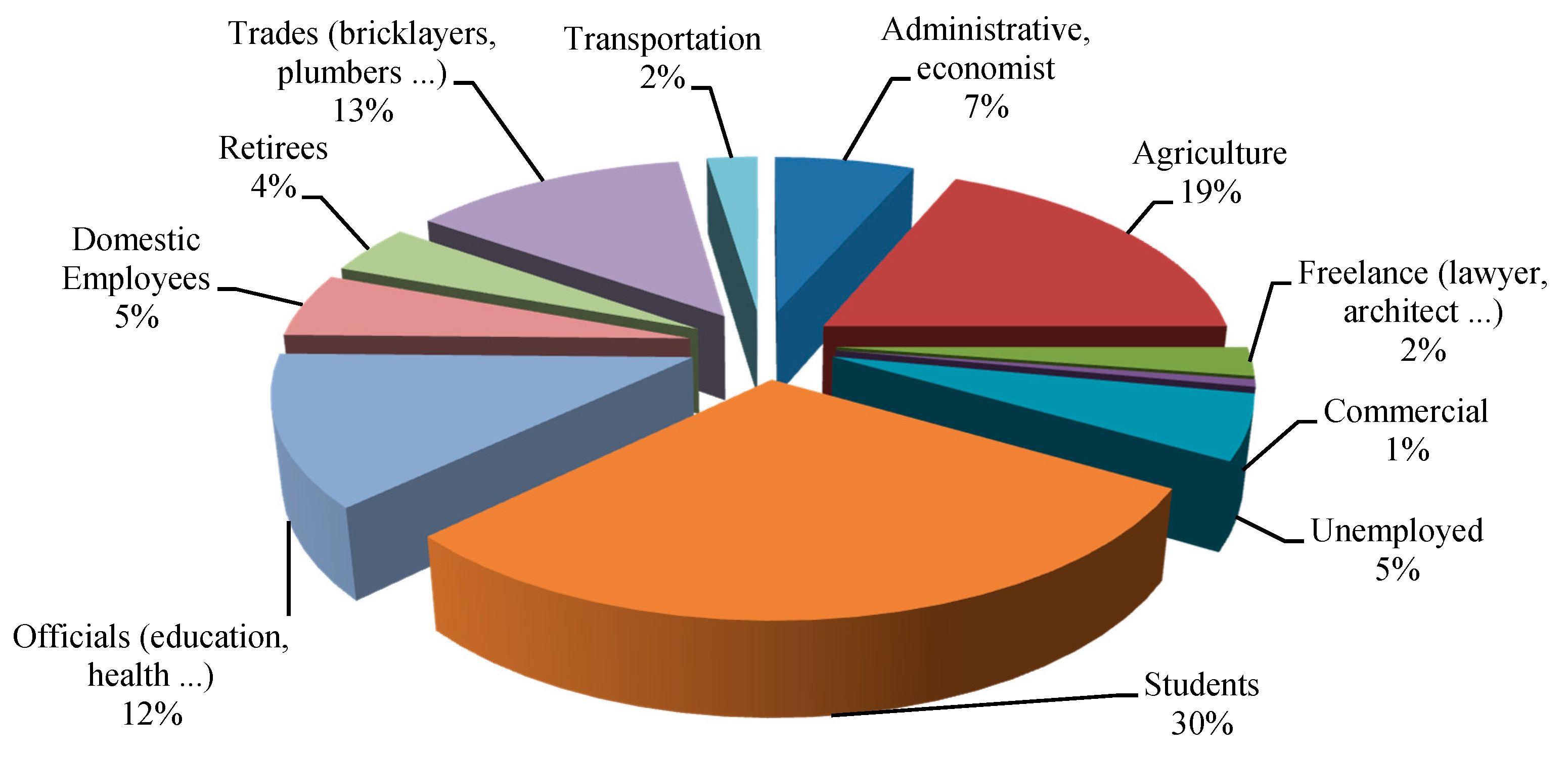


| Ratings. | Number of Appointments | Percentage Value (%) |
|---|---|---|
| Production space | 492 | 34.4 |
| Improves quality of life | 352 | 24.5 |
| Culture, tradition, identity | 256 | 17.9 |
| Nature | 224 | 15.6 |
| Backspace, crisis | 100 | 7.0 |
| No affection, no link | 8 | 0.6 |
| Total | 1432 | 100.0 |
| Ratings. | Number of Appointments | Percentage Value (%) |
|---|---|---|
| Speculation | 388 | 24.4 |
| Change of mentality (Rural to Urban) | 324 | 19.5 |
| Low profitability | 260 | 16.4 |
| Attractiveness to other production sectors | 188 | 11.9 |
| Inadequate policies | 140 | 8.8 |
| Lack of water resources | 108 | 6.8 |
| Disappearance of family farming | 92 | 6.8 |
| Lack of spatial planning | 84 | 5.3 |
| Total | 1584 | 100.0 |
| Ratings. | Number of Appointments | Percentage Value (%) |
|---|---|---|
| Improves economic diversification | 360 | 25.2 |
| Ensures food production | 276 | 19.3 |
| It constitutes a singular ecosystem | 220 | 15.4 |
| Essence of their lives | 192 | 13.4 |
| Maintain culture and identity | 144 | 10.1 |
| Landscape value | 120 | 8.4 |
| Excellent heritage | 116 | 8.1 |
| Total | 1428 | 100.0 |
© 2020 by the authors. Licensee MDPI, Basel, Switzerland. This article is an open access article distributed under the terms and conditions of the Creative Commons Attribution (CC BY) license (http://creativecommons.org/licenses/by/4.0/).
Share and Cite
Ponce-Sánchez, M.D.; García-Marín, R.; Canales-Martínez, G.; Lozano-Parra, J. Opinions on the Orchard of the Lower Segura River: A Changing Space under Great Human Pressure. Sustainability 2020, 12, 4446. https://doi.org/10.3390/su12114446
Ponce-Sánchez MD, García-Marín R, Canales-Martínez G, Lozano-Parra J. Opinions on the Orchard of the Lower Segura River: A Changing Space under Great Human Pressure. Sustainability. 2020; 12(11):4446. https://doi.org/10.3390/su12114446
Chicago/Turabian StylePonce-Sánchez, María Dolores, Ramón García-Marín, Gregorio Canales-Martínez, and Javier Lozano-Parra. 2020. "Opinions on the Orchard of the Lower Segura River: A Changing Space under Great Human Pressure" Sustainability 12, no. 11: 4446. https://doi.org/10.3390/su12114446
APA StylePonce-Sánchez, M. D., García-Marín, R., Canales-Martínez, G., & Lozano-Parra, J. (2020). Opinions on the Orchard of the Lower Segura River: A Changing Space under Great Human Pressure. Sustainability, 12(11), 4446. https://doi.org/10.3390/su12114446







